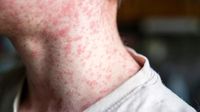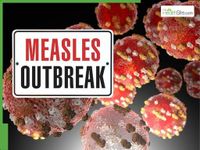The United States is facing a public health crisis as a deadly measles outbreak surges across the country, with Texas emerging as the hardest-hit state. With over 500 confirmed infections and two reported deaths—both unvaccinated infants—the outbreak marks the worst resurgence of measles in the country in over 20 years.
Experts are sounding the alarm over the consequences of declining vaccination coverage. Dr. Anika Shah, Chief Medical Officer at Texas Children's Hospital, emphasized, “This isn’t just a Texas problem—it’s a warning sign for the nation.” Health authorities have confirmed that the vast majority of new cases are occurring in unvaccinated individuals, with young children being the most vulnerable.
What’s especially alarming is that this outbreak comes decades after measles was officially declared eliminated in the U.S. in 2000. However, decreasing immunization rates, driven by misinformation and vaccine hesitancy, have created the perfect conditions for the virus to make a comeback.
Measles is an extremely contagious viral disease caused by the rubeola virus. It primarily targets the respiratory system and spreads rapidly through airborne droplets expelled when an infected person coughs, sneezes, or even breathes in close proximity to others. Symptoms of measles typically begin with a high fever, cough, runny nose, and red, watery eyes, followed by a distinctive red rash that spreads across the body. Complications can include pneumonia, brain swelling, and even death, especially in young children and immunocompromised individuals.
West Texas, especially the Seminole area, has become the epicenter of the outbreak. Health officials have expanded the outbreak zone to include 10 counties, and the virus has already spread to neighboring states including New Mexico, Oklahoma, and Kansas, and even across the border into Mexico. One of the most tragic aspects of the outbreak has been the deaths of two unvaccinated children. Both had not received the MMR (measles, mumps, rubella) vaccine, a critical defense against the disease.
Schools in affected areas are switching to remote learning or closing temporarily to contain the virus, while hospitals in cities like Houston and Dallas report a surge in pediatric cases. The Centers for Disease Control and Prevention (CDC) advises that children receive two doses of the MMR vaccine—one between 12 to 15 months of age and another between 4 to 6 years. This regimen is about 97% effective in preventing measles.
Yet in many Texas school districts, MMR vaccination rates have dropped below 80%, far short of the 95% threshold needed to maintain herd immunity. Over 30,000 children in Texas remain unvaccinated due to personal or religious belief exemptions. In response to the outbreak, Texas Governor Maria Thompson issued an executive order urging schools to audit vaccination records and temporarily suspend non-medical exemptions in high-risk areas. Mobile vaccination clinics are being deployed to underserved and rural communities.
Health experts are urging parents to ensure their children are fully vaccinated, warning that failure to do so puts not just individuals but entire communities at risk. Dr. Carla Mendoza of the CDC put it bluntly: “We are in the midst of a preventable crisis. Measles shouldn’t be killing anyone in 2025.” The outbreak serves as a sobering reminder that public complacency can undo decades of medical progress. The best defense remains clear: vaccination.





